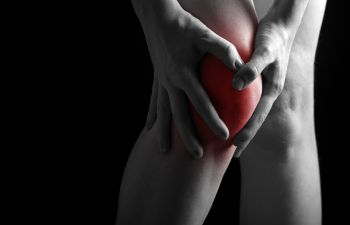Jumper’s Knee is a condition characterized by inflammation of the patellar tendon. The patellar tendon connects the patella (kneecap) to your tibia (shin bone). Jumper’s Knee is also known as patellar tendonitis. Jumper’s Knee can be caused by injury or overuse of the knee’s tendons. It is common in sports, especially those with a lot of running and jumping, such as basketball and volleyball. However, many other sports and movements can cause the condition.
Common Symptoms of Jumper’s Knee
As you would expect, pain and tenderness are common symptoms of Jumper’s Knee, particularly beneath the kneecap, around the patellar tendon. Pain may be present when you run, walk or jump and can become worse when you bend or straighten your leg. Swelling may also be present, as well as bruising or redness. Jumper’s Knee can also cause stiffness in the knee while kneeling, squatting or jumping, or weakness in the calf.
In order to be diagnosed with Jumper’s Knee, a physical exam will be required. An X-ray may also be used to help with the diagnosis. There are 4 grades of severity of Jumper’s Knee. Grade 1 means you have some pain performing activities. Grade 4 means you have constant pain, which may require more advanced treatment options.
How to Treat Jumper’s Knee
It’s important to notice the symptoms of Jumper’s Knee, so you can start treatment early to prevent further damage. The most common treatment is the R.I.C.E. method. This is used to reduce pain and swelling and stands for Rest, Ice, Compression and Elevation. You can achieve all four by using ice or hot and cold packs on your leg. You can help to elevate your leg with an elevating splint, although a cushion or footrest may be sufficient if the symptoms are not severe. Elevating your leg reduces blood flow, which can also reduce pain. When you are not resting, it’s best to use a knee brace. For pain relief you should use nonsteroidal anti-inflammatories (NSAIDs), such as ibuprofen or naproxen. Stretching and strengthening exercises should also be performed for rehabilitation.
If the above treatments fail to help you, surgery may be required to resolve the problem. The surgery is called Arthroscopic debridement and consists of an incision over the patella tendon and the removal of some abnormal tissue. Many recover enough to return to sporting activities after just 8 to 12 weeks, although it can take longer for some people.
If you think you may have Jumper’s Knee or if you have any other knee pain, contact Dr. Steven Struhl, a top knee specialist and orthopedic surgeon, for an examination and consultation.




